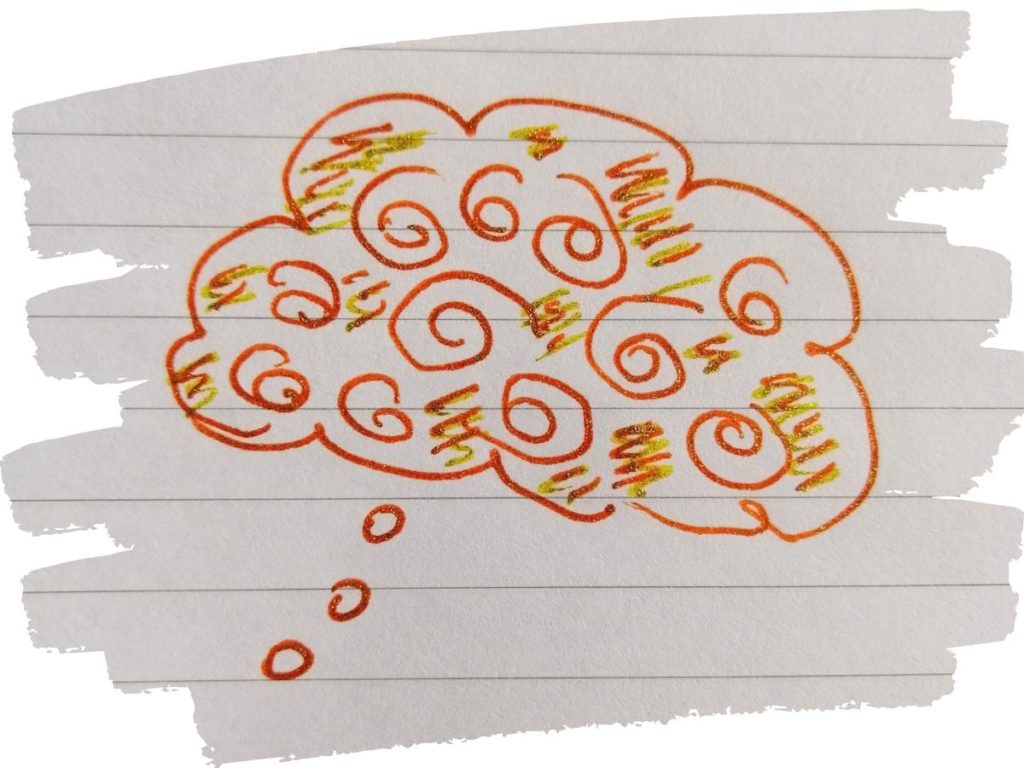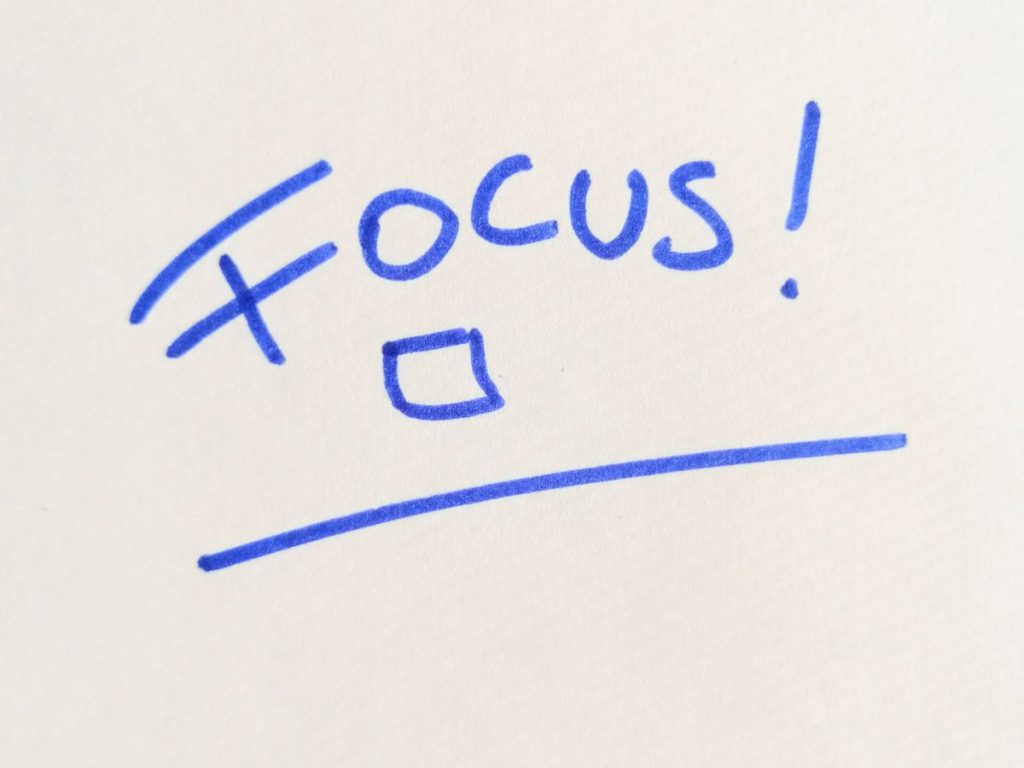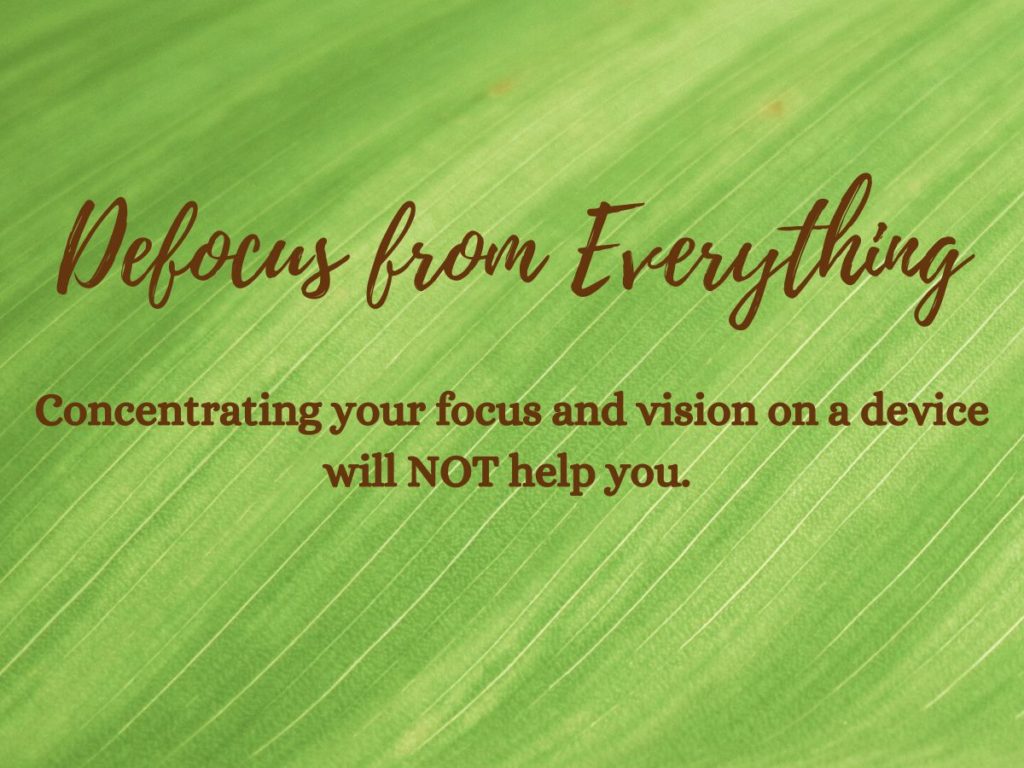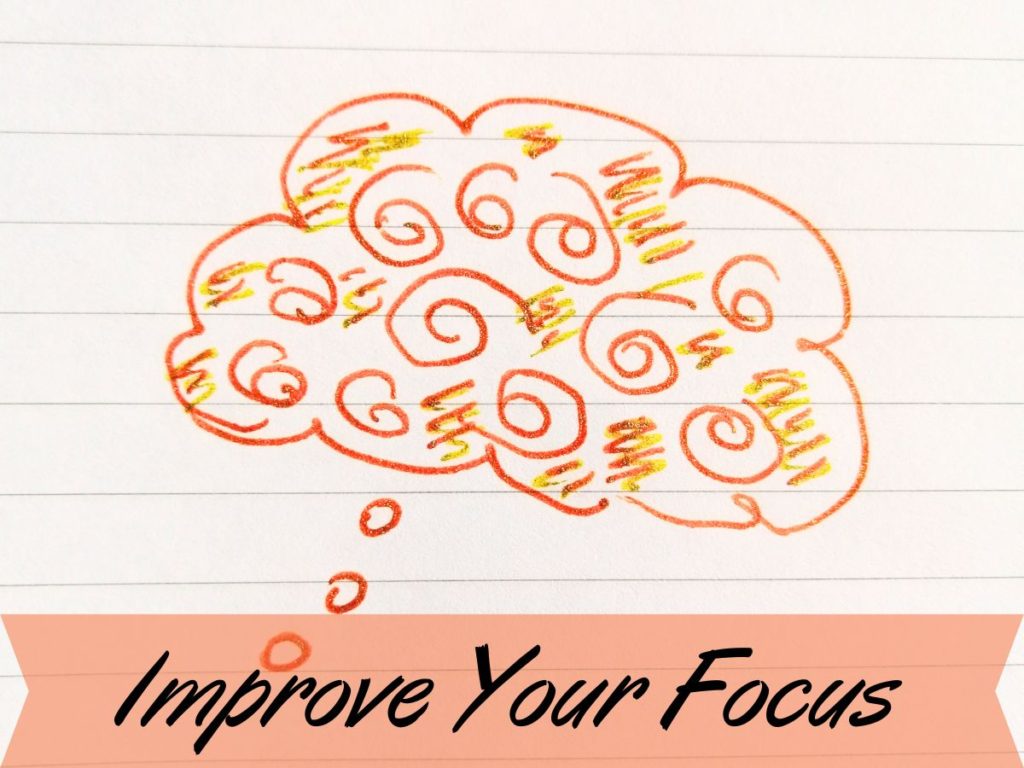At work, while studying, when carrying out any project. Knowing how to improve focus becomes essential for efficient time management. This post shows you three ways to improve your focus, helping you gain in productivity and satisfaction.

How to Improve Focus: Advice and Techniques
There are a lot of things that affect your capability of focusing and of keping that focus. One, for example, is your sleep cycle. Sleeping well and enough will always put you some steps ahead in the productivity race. Eating habits also play a role. A lot of contributing factors go into your ability to exploit your focus at the maximum. Dr. Andrew Huberman dedicated a nice podcast to this topic.
However, circumstances are not always optimal. The real trick is learning to manage those circumstances and still be productive, having the ability to focus.
Having lots on your mind will contribute to being more distracted, for example, even if you had a good night sleep and you’re eating the diet of a superhuman. Obviously, we can’t – and shouldn’t – give it all up and just do nothing.
While being forgiving with yourself and taking your time when you need it is essential, surrendering to circumstances is not usually the best of ideas. Learining how to improve your focus on those circumstances will make your life easier and give you a bit of peace of mind.
Techniques are always helpful until they aren’t. The three science-backed techniques showed here work with your brain to reach the focus goal. However, we are all different, and something may work better for some than others. If you see that one technique does not make you perform as you wish, try it for a bit, don’t get discouraged, but let it go if it keeps underperfrming. You will probably have another technique that is perfect for you a your disposal.
How to Improve Focus with a Square
One of the most difficult things to do when the mind is wandering is to direct it to focus. Once you truly reached a focus state, usually, it is somewhat easier to keep the focus than it was to get there. A helpful way is to draw a square on a piece of paper, focus on it, solely on it, for 30 seconds, and then switch immediately to what you were supposed to do. It will be easier for you to get into the focus zone and carry out your work and studies.
A simple and quick thing to do, which can greatly increase your path towards concentration. Once you get into the focus state, you will have to manage it in order to optimize it. We will show how to do that later on in this post.

White, Pink, Brown Noise
The “color noises” will also help you transition to the focus state. When your mind doesn’t want to stay quiet, you can give it a little help by listening to white, brown and pink noise (choose one). Those types of noises are going to stimulate a certain part of your brain that will help you get into concentration mode.
The “color” of the noise depends on the frequences that are in the noise. You may resonate with one more than the others, and that may be “your” tool. It doesn’t matter if you listen to that noise with headphones or just play it in the room. You will still get the benefits.
Rememeber, though: the tool is not to increase your focus per se. The noise will increase your ability to shift into focus-mode, and keep it while you are there.
Those types of noises can also be used to calm yourself, or others. When feeling anxious, you may want to try listening to white, pink or brown noise. That may calm your nerves and give you some peace of mind.
Defocus
Believe it or not, an essential part of your ability to improve your focus comes from deliberately defocusing. Your mind is not designed to stay focused on something for 24 hours per day. There is something called Ultradian cycles, which are cycles your brain goes through. Those cycles determine how long you can stay focused. Generally, the human mind can sustain cycles of 90 minutes of focus per session.
You do not have to do the whole 90 minutes. Focusing requires a lot of metabolic energy and can be exhausting. You may want to choose 45-minute sessions, or 25-minute sessions, like it’s done in the Pomodoro Technique.
What is essential, though, is that you then take a break and properly defocus. That will greatly improve your focus when you are in session. It may be counter-intuitive for some, but your brain and productivity will thank you for taking a good, proper break.
Remember though: the break per se doesn’t mean much if you do not let your brain defocus from everything. You may take a break from working, but if you spend your break learning how to play that guitar riff you like, your brain isn’t resting, nor defocusing, at all.
How to Manage your Focus Session
A possible way to construct your focus sessions would be to set a timer for 25, 45 or 90 minutes and go on with what you have to do. To help you get into the focus mode use the two techniques previously mentioned. You can include those things in the time of your focus sessions, accepting that the first few minutes of each session (whatever its length) will be dedicated to shifting into the focus mode. Having tools to improve your ability to do that, obviously, improves your performance as a whole. It will take you less time and effort to reach the focus state.
After you are done with your focus session, it is very important for you to decompress and properly defocus. You may be thinking that’s the right time to pick your phone up and scroll through the mindless videos of your favorite app. That would be a mistake.
When taking a break, you need to defocus from everything. Concentrating your focus and vision on a device will NOT help you.

Try to do some mindless activity that does not require you to limit your vision and doesn’t ask your mind to process much. If you have the chance to do it, just go outside and look around, without fixing on anything. Look at the sky if you can. Take a proper break.
If you really want to do something that still makes you feel productive, here are some ideas on how to build a 5-minute break that will work for you. You still need to give your mind a rest, though.
The Break Time
It’s important that you set aside an appropriate amount of time to relax and defocus. While a 5-minute break works great for shorter focus sessions, such as in the pomodoro technique, when you focus for longer you should take at least 10 minutes. If you decide to go all the way and have a 90-minute focus session, it would be a great idea to have minimum 10 minutes for your break but to even increase that amount of time up to 30 minutes.






